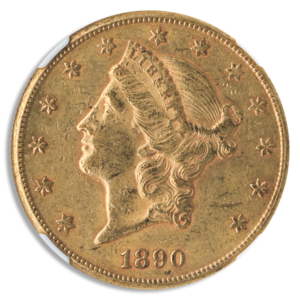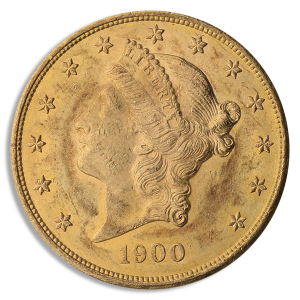1882-O Morgan $1 PCGS MS63
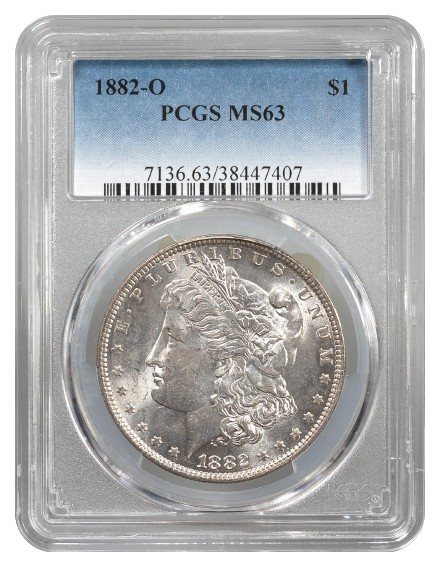


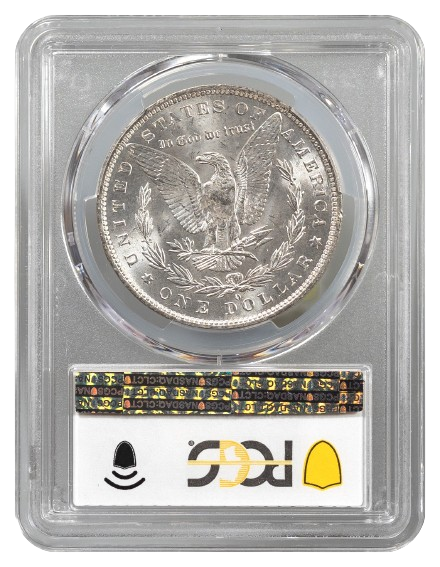

Silver dollar coins were exceedingly popular in America, especially in the American West. But not everyone loved these coins. Proponents of a Gold Standard for American currency wanted to eliminate these coins and in 1873 they were successful.
The Coinage Act of 1873 eliminated the silver dollar coin, and it prohibited the exchange of silver ore for silver dollars as well. For five years that was the law of the land.
But in 1878 the Bland-Allison Act was passed, and it restored the striking of a silver dollar coin. More importantly, the Act of 1878 required the Secretary of the Treasury to purchase $2 million dollars of newly mined silver from Western mining interests, every month.
The new silver dollars coins were struck from 1878 until 1904. But after a 17-year hiatus, there was a shortage of silver after World War I, so these silver dollars were struck again in 1921.
Before striking these new coins, new coin designs had to be created. George T. Morgan, the Assistant Chief Engraver of the United States Mint, created a design for each side that appealed to many people and met all of the coinage requirements.
Morgan’s obverse design displayed an allegorical representation of a portrait of Miss Liberty, facing to the left. She wore a Phrygian cap (a slave cap) on her head, and a crown made of cotton and wheat. She also wore a headband on which the word “LIBERTY,” was inscribed.
Also on the obverse, the upper periphery displayed the motto, “E PLURIBUS UNUM,” with the date shown on the lower periphery. There are also thirteen six-pointed stars around the periphery – seven on the left and six on the right.
Morgan’s reverse design displayed a large American Bald Eagle, which also faced to the left, and the eagle’s wings are outstretched and upraised. The traditional motto, “IN GOD WE TRUST,” is centered between the eagle’s wings. This eagle is centered within an olive wreath. There are three arrows in one of the eagle’s talons and an olive branch in the other talon. On the upper periphery is “UNITED STATES OF AMERICA,” and the denomination “ONE DOLLAR,” is displayed on the lower periphery.
This coin was dated 1882, and it was struck at the New Orleans Mint, so there is an “O” mintmark underneath the eagle. The New Orleans Mint struck a small mintage of only 6,090,000 silver dollar coins during that year.
This coin is graded as MS63 by the Professional Coin Grading Service (PCGS), one of the three most accurate and desirable grading services in existence.
Simply click the “Add to Cart” button now or call 1-800-880-4653 to speak to one of our highly trained numismatists, who will be happy to assist you.
The Coinage Act of 1873 eliminated the silver dollar coin, and it prohibited the exchange of silver ore for silver dollars as well. For five years that was the law of the land.
But in 1878 the Bland-Allison Act was passed, and it restored the striking of a silver dollar coin. More importantly, the Act of 1878 required the Secretary of the Treasury to purchase $2 million dollars of newly mined silver from Western mining interests, every month.
The new silver dollars coins were struck from 1878 until 1904. But after a 17-year hiatus, there was a shortage of silver after World War I, so these silver dollars were struck again in 1921.
Before striking these new coins, new coin designs had to be created. George T. Morgan, the Assistant Chief Engraver of the United States Mint, created a design for each side that appealed to many people and met all of the coinage requirements.
Morgan’s obverse design displayed an allegorical representation of a portrait of Miss Liberty, facing to the left. She wore a Phrygian cap (a slave cap) on her head, and a crown made of cotton and wheat. She also wore a headband on which the word “LIBERTY,” was inscribed.
Also on the obverse, the upper periphery displayed the motto, “E PLURIBUS UNUM,” with the date shown on the lower periphery. There are also thirteen six-pointed stars around the periphery – seven on the left and six on the right.
Morgan’s reverse design displayed a large American Bald Eagle, which also faced to the left, and the eagle’s wings are outstretched and upraised. The traditional motto, “IN GOD WE TRUST,” is centered between the eagle’s wings. This eagle is centered within an olive wreath. There are three arrows in one of the eagle’s talons and an olive branch in the other talon. On the upper periphery is “UNITED STATES OF AMERICA,” and the denomination “ONE DOLLAR,” is displayed on the lower periphery.
This coin was dated 1882, and it was struck at the New Orleans Mint, so there is an “O” mintmark underneath the eagle. The New Orleans Mint struck a small mintage of only 6,090,000 silver dollar coins during that year.
This coin is graded as MS63 by the Professional Coin Grading Service (PCGS), one of the three most accurate and desirable grading services in existence.
Simply click the “Add to Cart” button now or call 1-800-880-4653 to speak to one of our highly trained numismatists, who will be happy to assist you.
| Specifications | |
| Year | 1882-O |
| Denomination | One Dollar |
| Grade | MS63 |
| Country | United States of America |
| Grading Service | PCGS |
| Weight | .77344 |
| Fineness | .900 Fine Silver |
| Diameter | 38.1 mm |
| Manufacturer | The United States Mint |





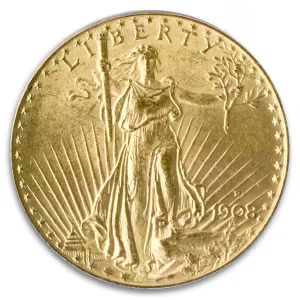
 Quick View
Quick View